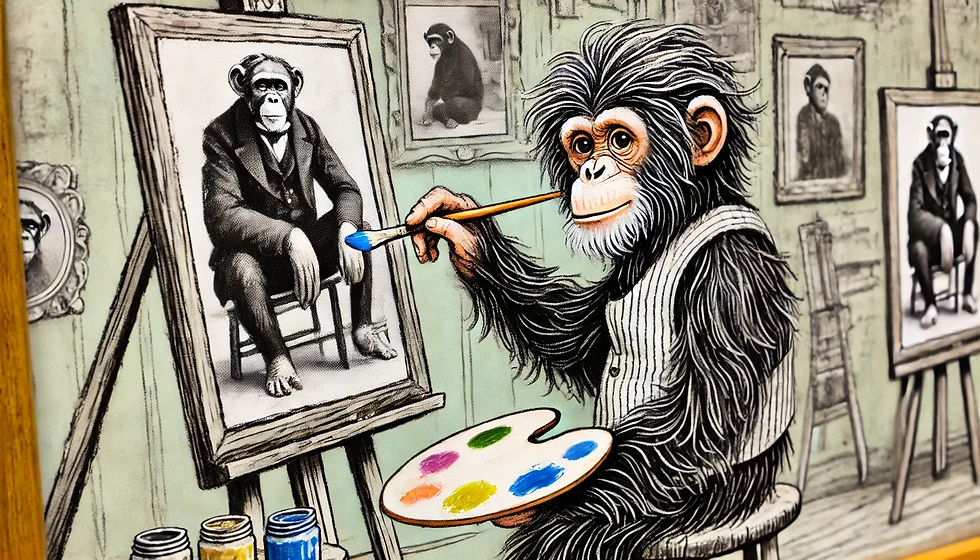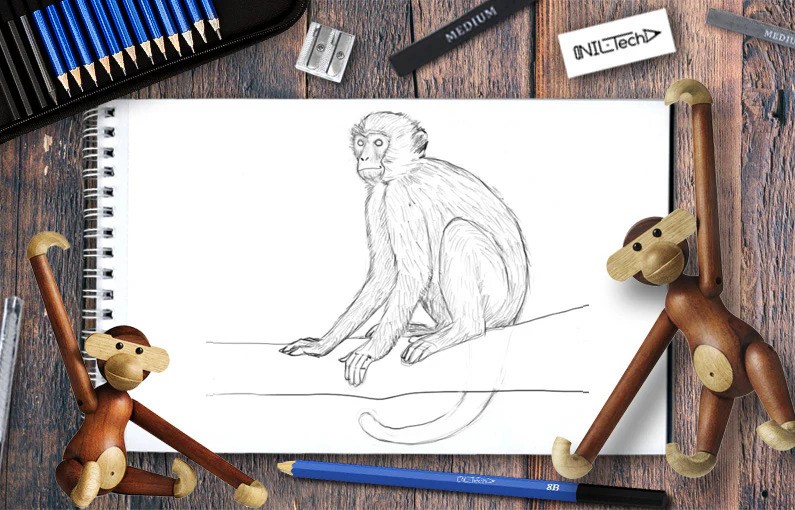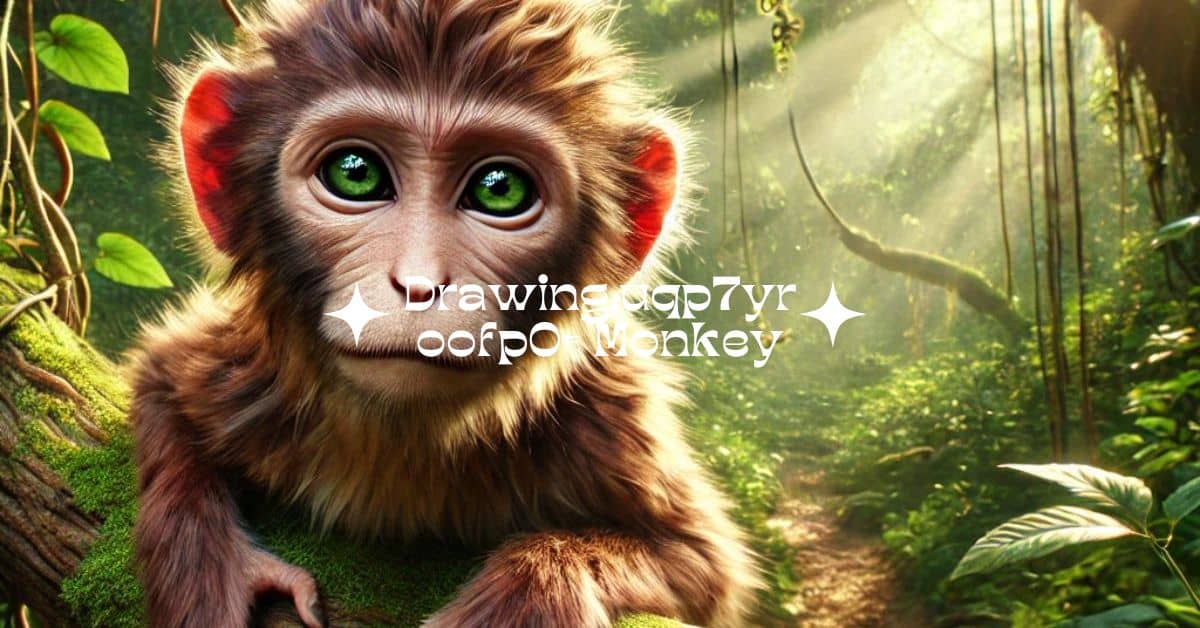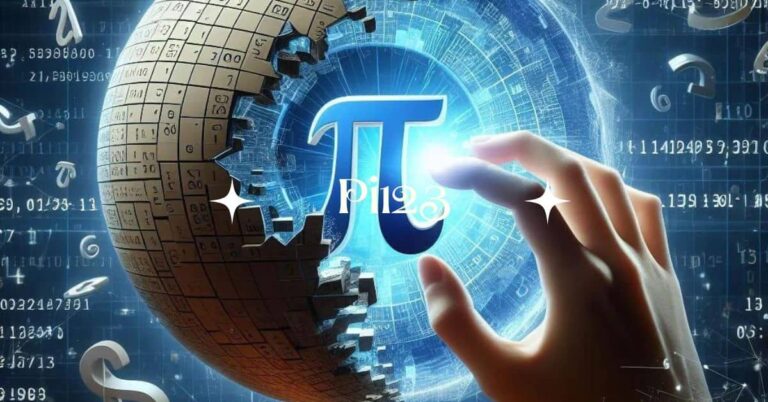Drawing:uqp7yroofp0= Monkey – Techniques, Tips, and Tricks!
Drawing:uqp7yroofp0= Monkey was a breakthrough moment in my art journey. I remember sitting in my backyard, sketching a playful monkey I had seen at the zoo—it brought my imagination to life. Each stroke felt like connecting with its mischievous energy, making the process unforgettable.”
Drawing:uqp7yroofp0= Monkey combines creativity and fun, letting you capture the playful essence of monkeys through art. It’s perfect for all skill levels, offering endless inspiration for dynamic poses and expressive details. Start your artistic journey today!
we’ll dive into the exciting world of Drawing:uqp7yroofp0= Monkey, exploring how to bring these lively creatures to life on paper. From mastering expressive details to experimenting with creative techniques, you’ll discover tips, tricks, and inspiration to make your monkey drawings truly stand out. Get ready to unleash your inner artist!
What is Drawing:uqp7yroofp0= Monkey?
Drawing:uqp7yroofp0= Monkey refers to creating artistic representations of monkeys, allowing artists to explore different styles, techniques, and mediums. Whether it’s through detailed sketches capturing realistic fur texture or playful cartoons highlighting their whimsical nature, monkeys offer endless possibilities for artistic expression. Artists can experiment with color, form, and emotions, using monkeys as dynamic subjects in various art forms, including traditional drawing, digital art, and mixed media.
Why Monkeys?
Monkeys are highly expressive animals, making them ideal subjects for artists seeking to convey emotion and energy. Their playful behavior, intelligence, and curiosity are qualities that resonate in art, allowing for diverse interpretations. In addition, monkeys symbolize social dynamics and can evoke themes of humor, mischief, or even introspection. D
Evolution of Monkey Art
The fascination with monkeys in art stretches back to ancient civilizations, where monkeys were depicted in sculptures, murals, and pottery. In more recent times, monkeys have appeared in everything from classic oil paintings to modern illustrations and digital art, maintaining their appeal across generations. This evolution demonstrates the enduring cultural significance of monkeys as symbols of playfulness, intelligence, and curiosity.
Why Choose Monkeys for Your Artwork?

Dynamic Poses:
- Monkeys are full of energy and movement, making them perfect for dynamic and engaging compositions.
- Their ability to leap, swing, and interact creates exciting opportunities for artists to experiment with different perspectives and angles.
Expressive Features:
- Monkeys’ faces are incredibly expressive, allowing artists to capture a wide range of emotions from curiosity to joy to mischief.
- Their facial expressions provide depth and personality, making artwork feel alive and relatable.
Symbolic Meaning:
- In many cultures, monkeys symbolize intelligence, wit, community, and playfulness.
- They often represent the duality of mischief and wisdom, offering rich thematic content for artistic exploration.
Creative Challenge:
- Drawing monkeys can be a rewarding challenge due to their complex anatomy, motion, and emotions.
- The process of capturing their energy and fluidity hones an artist’s skills in both realism and creative expression.
Read: Synchrony Charitable Wealth Planning: Plan For The Future!
7 Proven Techniques for Drawing:uqp7yroofp0= Monkey – That Will Boost Your Skills!
Understanding Monkey Anatomy
- Key Features: Study the proportions, muscles, and facial traits of monkeys to capture their true form.
- Pose Practice: Use reference images to practice drawing monkeys in different poses like standing, climbing, or swinging.
- Pro Tip: Begin with basic shapes like circles and ovals to simplify their complex anatomy.
Choosing the Right Tools
Traditional Tools:
- Pencils: Use an HB pencil for outlines and 2B-6B pencils for shading.
- Paper: Smooth paper is ideal for detailed pencil sketches, while textured paper works well with charcoal.
Digital Tools:
- Software: Try Procreate or Photoshop for easy editing and adding details.
- Brushes: Pressure-sensitive brushes help create realistic fur texture.
Mastering Basic Sketches
Step-by-Step:
- Start by drawing simple shapes like circles and ovals for the body.
- Add lines for the limbs and guidelines for the face.
- Refine the sketch by adding details to the body and face.
Capturing Facial Expressions
- Details Matter: A monkey’s emotions are most visible in its eyes and mouth.
- Common Expressions: Wide eyes for curiosity, a smiling mouth for playfulness, and raised eyebrows for alertness.
- Tip: Use photo references to practice different facial expressions and bring your monkey to life.
Adding Realistic Fur
- Layering: Start with a base color and add small, directional strokes to build texture.
- Tools for Realism: Fine-tip pens or digital brushes work best for creating fur details.
Playing with Colors
- Natural Palettes: Stick with browns, blacks, and grays for a realistic look.
- Creative Choices: Bright colors can give a cartoonish effect, adding fun to your artwork.
- Blending Techniques: Use smooth gradients for realistic color transitions and shadows.
Composition Tips
- Storytelling: Add background elements like trees or fruit to tell a story with your drawing.
- Rule of Thirds: Position the monkey off-center to create a more dynamic composition.
- Depth Creation: Use shading in the background or overlap objects to create depth in the scene.
Read: Sv388 Gold – The Future Of Digital Gold Investment!
Overcoming Common Challenges in Monkey Drawing – Expert Tips!
Proportions:
- Solution: Use grid techniques to break down the body into manageable sections. This helps maintain accurate proportions and align elements correctly.
Dynamic Poses:
- Solution: Study videos of monkeys in motion to understand how their bodies move. Focus on how their limbs stretch and bend to capture lifelike poses.
Fur Detailing:
- Solution: Start by using broad strokes to create the base texture of the fur. Then, gradually add fine, short strokes to build layers and create a realistic, detailed appearance.
Tools and Resources for Drawing:uqp7yroofp0= Monkey – A Complete Guide”!

Digital Platforms:
- ArtStation: Great for exploring monkey-themed art and finding inspiration from professional artists.
- Skillshare: Offers step-by-step tutorials for beginners and advanced artists on drawing animals, including monkeys.
Traditional Tools:
- Pencils: Faber-Castell pencils are ideal for creating fine details and shading.
- Paper: Canson sketchpads are perfect for capturing detailed sketches and providing a smooth texture for your drawings.
Reference Materials:
- Books on Wildlife Anatomy: Help you understand the skeletal and muscular structure of monkeys for accurate depiction.
- High-Quality Wildlife Photography: Provides real-life references to study facial expressions, fur texture, and natural poses.
Read: Tinrent – The Future of Smart Rental Solutions!
FAQs
What is the easiest way to start drawing monkeys?
Begin with basic shapes for the body, then add details gradually using references to improve accuracy.
What tools are best for drawing monkeys?
Use graphite pencils for traditional drawings and Procreate or Photoshop with custom brushes for digital work.
How can I improve my monkey-drawing skills?
Practice regularly, study monkey anatomy, and experiment with various drawing styles and techniques to enhance your skills.
What colors should I use for drawing monkeys?
For realism, use earthy tones like browns and grays, or go for bold colors if you’re aiming for an abstract or cartoonish style.
Where can I find inspiration for monkey drawings?
Explore wildlife photography, nature documentaries, and art communities like DeviantArt to find inspiration for your monkey drawings.
Conclusion
Drawing monkeys is an exciting artistic journey that blends creativity with skill. By mastering techniques like anatomy, fur detailing, and composition, you can bring your Drawing:uqp7yroofp0= Monkey to life. Embrace the challenge, experiment, and enjoy the process!






